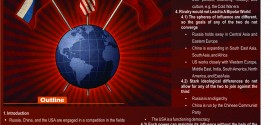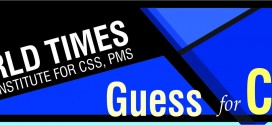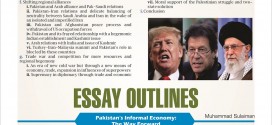1. Introduction
2. Types of Education
- Formal education
- Informal education
3. An Overview of Higher Education Setup in Pakistan
- Statutory position
- Administrative system
- Institutes
4. Ills Prevailing in Higher Education System of Pakistan
A. Infrastructure-related Ills
- Lack of institutes
- Missing necessary facilities
- Overcharging by private-sector institutions
B. Human Resource-related Ills
- Meagre strength of faculties
- Lack of motivation in members of faculty
- Lack of skills and expertise
- Meagre strength of support staff
- High dropout ratio at elementary level
C. Curriculum-related Ills
- Curriculum not in consonance with domestic needs
- More focus on mere theories
- Presence of mistakes and errors
- Lack of analytical approach
- Uninteresting and monotonous descriptions
- No focus on character-building
D. Teaching Methodology-related Ills
- Promotion and encouragement of cramming
- No focus on conceptual study
- Monotonous style of teaching
E. Examination-related Ills
- No testing of analytical skills
- Use of unfair means in examination halls
- Inconsistent style of grading
5. Factors Responsible for the Presence of Ills
- Budgetary constraints
- Myopic vision of the policymakers
- Distracted attention of the government
- Bureaucratic hurdles
- Poor growth of economy
- Commercialization of education
- Missing element of morality in the society
- Persistently-rampant corruption
- Incapacity of concerned HR departments
6. Impacts of Flawed Higher Education System
- Unemployment and underemployment
- Lack of talent and skills
- Devastating impacts on different sectors of economy
- Deteriorated image of the state
- Social degradation
- Increase in lawlessness and crime
7. Recommendations for the removal of Ills of the Higher Education Sector
- Devising sharply-focused, meticulously-planned and thoroughly-integrated policies
- Allocating reasonable budget to higher education
- Tapping of indigenous mineral, geographical and human resources to enhance the availability of funds
- Introduction of civil service reforms to improve the bureaucratic structure
- Mature, responsible and objective role of media for the upgrade of moral standards of the society
- Tightening the monitoring and regulatory mechanism to curb the commercialization of education
- Devising pragmatic policies for maximum utilization of available resources
- Focus on skills development of education- related human resource
- Annual revision and upgrade of curriculum
- Use of technology to improve the examination standards
- Attracting best brains to education sector by improving perks
8. Conclusion
 Jahangir's World Times First Comprehensive Magazine for students/teachers of competitive exams and general readers as well.
Jahangir's World Times First Comprehensive Magazine for students/teachers of competitive exams and general readers as well.



